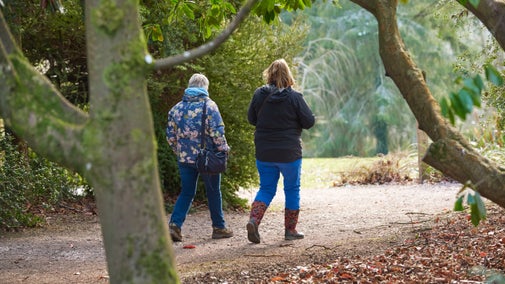Bolberry Down and Soar Mill Cove walk
Devon
Discover a circular walk that takes in some of the most scenic coastline of South Devon. Find out more about the history of the area and enjoy far-reaching views out to sea and along the coast. Much of the area is listed as being of Special Scientific Interest (SSSI) for its insects, bird and plant life. Don't forget to bring your binoculars to make the most of your visit.
Near to
Bolberry DownStart point
Bolberry Down car park, grid ref SX688385Trail information
Please be aware of livestock
Be aware that you may encounter livestock, which can include sheep and cattle, on this route. Please follow the guidance of onsite signage and take any dog waste away with you.
More near here
Prawle Point walk
This walk is full of drama: heart thumping cliff-top climbs, with rocky raised beaches below. Look out for the sunken Demetrios below Signalhouse Point and don't miss the ancient boundary stones that dot the landscape.

Circular walk from Little Dartmouth
Take in coastal and countryside views on this circular walk from Little Dartmouth, Devon, following the scenic coast path and passing a Civil War fort.

Plymbridge Woods family cycle trail
A ten-mile cycle trail along the old Great Western Railway, through woodland and open countryside, suitable for children of of all ages.

Get in touch
Our partners

We’ve partnered with Cotswold Outdoor to help everyone make the most of their time outdoors in the places we care for.
You might also be interested in
Things to do at Bolberry Down
Head out for a walk, discover a historical landscape and take in spectacular views of the surrounding coast and countryside at Bolberry Down.

History of Bolberry Down
Learn about Bolberry Down's history, from an Iron Age fort and shipwrecks still submerged beneath the waves to radar stations from the Second World War.

Our work: saving the cirl bunting
Find out about the measures we have taken in partnership with local farmers and RSPB to help reverse the decline of the cirl bunting, which has recovered from the brink of extinction.

Parkrun at Bolberry Down
Find out everything you need to know about joining a Parkrun at Bolberry Down, from what to wear, to route details, to where and when to meet.

Cotswold Outdoor: our exclusive walking partner
Learn about the National Trust’s ongoing partnership with Cotswold Outdoor. Find out how they help us care for precious places and the exclusive discount available for National Trust supporters.

Staying safe at National Trust places
The special places in National Trust care sometimes come with a few risks for visitors, be it coastline or countryside. Find out how to keep safe throughout your visits.

Follow the Countryside Code
Help to look after National Trust places by observing a few simple guidelines during your visit and following the Countryside Code.

Walking in Devon
From rugged coastline with captivating views to gentle woodland strolls, these are some of the best walks in Devon this winter.


